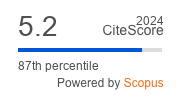Article | Open Access
Funding the War in Ukraine: The European Peace Facility, the Macro‐Financial Assistance Instrument, and the Slow Rise of an EU Fiscal Capacity
| Views: | 4659 | | | Downloads: | 6042 |
Abstract: The war in Ukraine represented a major geopolitical shock for the EU. In the face of an illegal Russian aggression, EU institutions and member states rallied to support Ukraine. Nevertheless, the war in Ukraine also exposed the limited fiscal capacity of the EU. As a result, EU institutions and member states had to come up with creative ways to financially back Ukraine’s military and civilian efforts. This article examines the two key tools deployed by the EU so far to fund Ukraine in its war against Russia, namely the European Peace Facility and the Macro-Financial Assistance Instrument. The article details the legal features of these tools, evaluates their intergovernmental vs. supranational nature, and reflects on their significance for the consolidation of an EU fiscal capacity. As the article argues, the war in Ukraine quickly prompted the EU to replicate some of the novelties it used to respond to the Covid-19 pandemic, namely the use of common borrowing and spending. Nevertheless, structural fiscal and governance weaknesses still limit the ability of the EU to mobilize resources and leverage power on the international stage.
Keywords: debt; EU budget; European Peace Facility; Macro‐Financial Assistance Instrument; war in Ukraine
Published:
© Federico Fabbrini. This is an open access article distributed under the terms of the Creative Commons Attribution 4.0 license (http://creativecommons.org/licenses/by/4.0), which permits any use, distribution, and reproduction of the work without further permission provided the original author(s) and source are credited.


